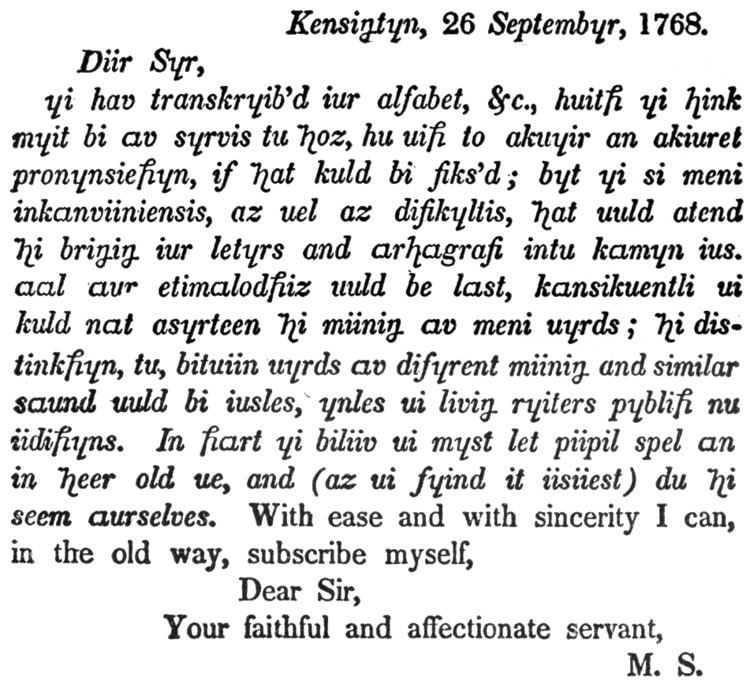 | ||
Benjamin Franklin's phonetic alphabet was Benjamin Franklin's proposal for a spelling reform of the English language. The alphabet was based on the Latin alphabet used in English. Franklin modified the standard English alphabet by omitting the letters c, j, q, w, x, and y, and adding new letters to explicitly represent the open-mid back rounded and unrounded vowels, and the consonants sh, ng, voiced th, and voiceless th. It was one of the earlier proposed spelling reforms to the English language. The alphabet consisted of 26 letters in the following order:
Contents
Other English phonemes are represented as follows:
Vowels
Franklin's proposed alphabet included seven letters to represent vowels. This set consisted of two new letters, in addition to five letters from the existing English alphabet: a, e, i, o, u. The first new letter was a formed as a ligature of the letters o and a, and used to represent the sound [ɔ] (as written in IPA). The second, ɥ, was used for [ʌ].
Franklin proposed the use of doubled letters to represent what he called long vowels. In his examples of writing in the proposed alphabet, Franklin contrasts long and short uses of his letter e, with the words "mend" and "remain," respectively spelled in Franklin's system as "mend" and "remeen." In this system, the doubled "ee" is used to represent the /eɪ/ sound in "late" and "pale." Likewise, "ii" is used to represent the /iː/ sound in "degrees", "pleased", and "serene." One of Franklin's correspondences written in the new alphabet is inconsistent in this regard, representing the /eɪ/ sound in "great" and "compared" with the accented letter "ê" instead of "ee".
Consonants
Franklin's proposed alphabet included nineteen letters to represent consonants. This set consisted of four new letters, in addition to fifteen letters from the existing English alphabet: b, d, f, g, h, k, l, m, n, p, r, s, t, v, z. New letters were proposed to replace the English digraphs ng, sh, voiced th, and voiceless th. New consonant digraphs based on these new letters were used to represent the affricate sounds of ch in cherry and j in January.
The most influential of Franklin's six new characters appears to have been the letter eng, ⟨ŋ⟩, for "ng". It was later incorporated into the IPA. Alexander Gill the Elder had used this letter in 1619.
